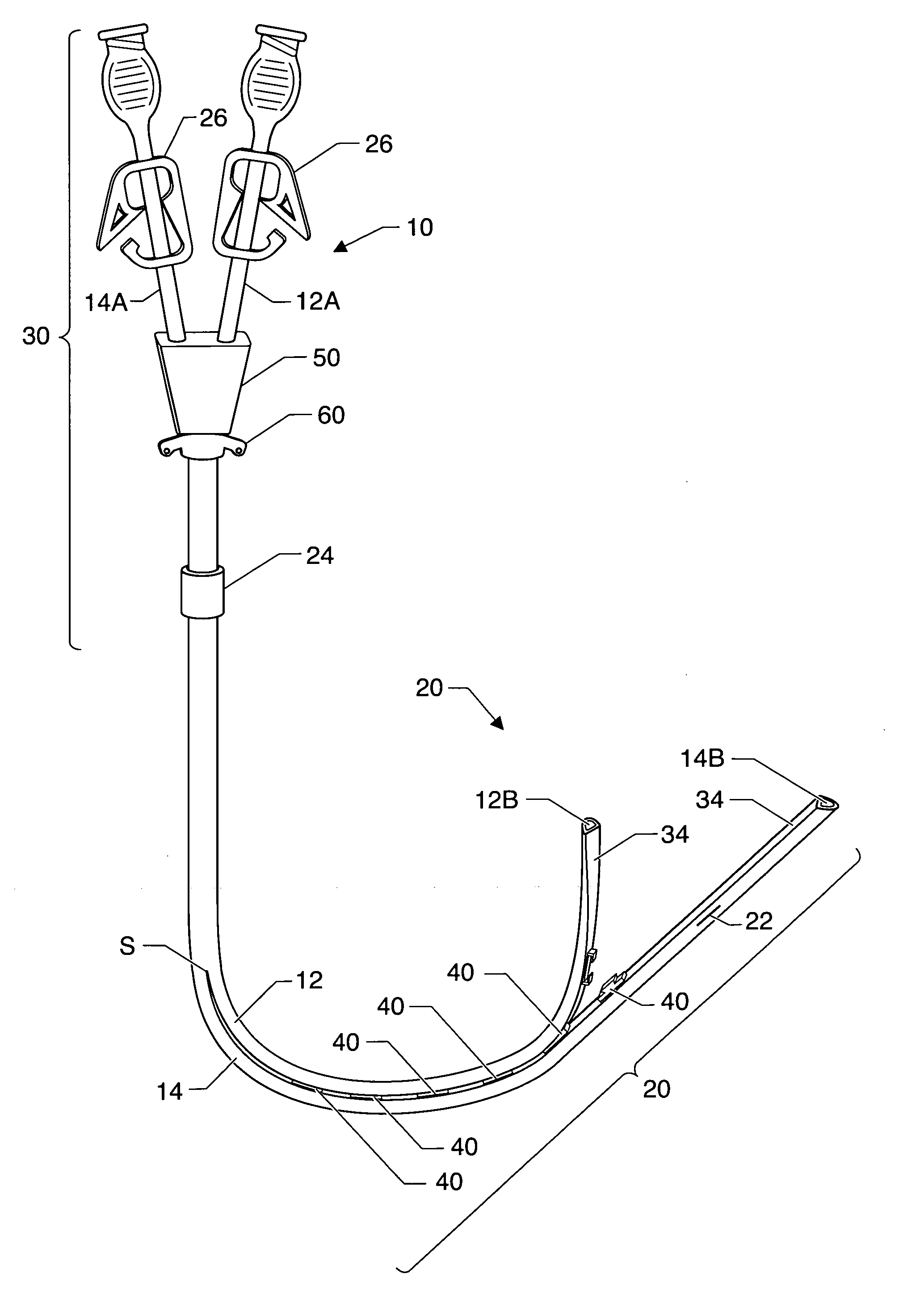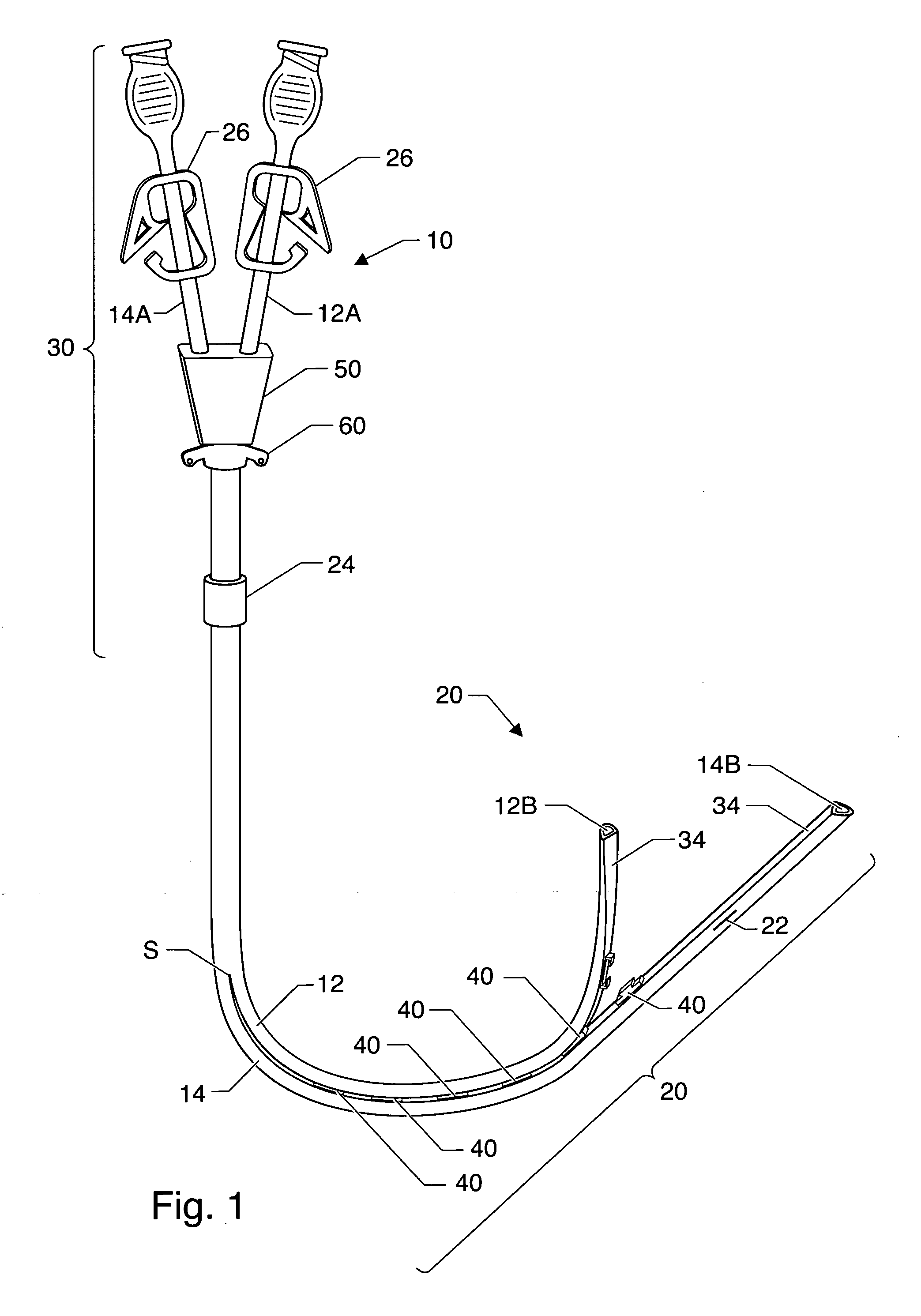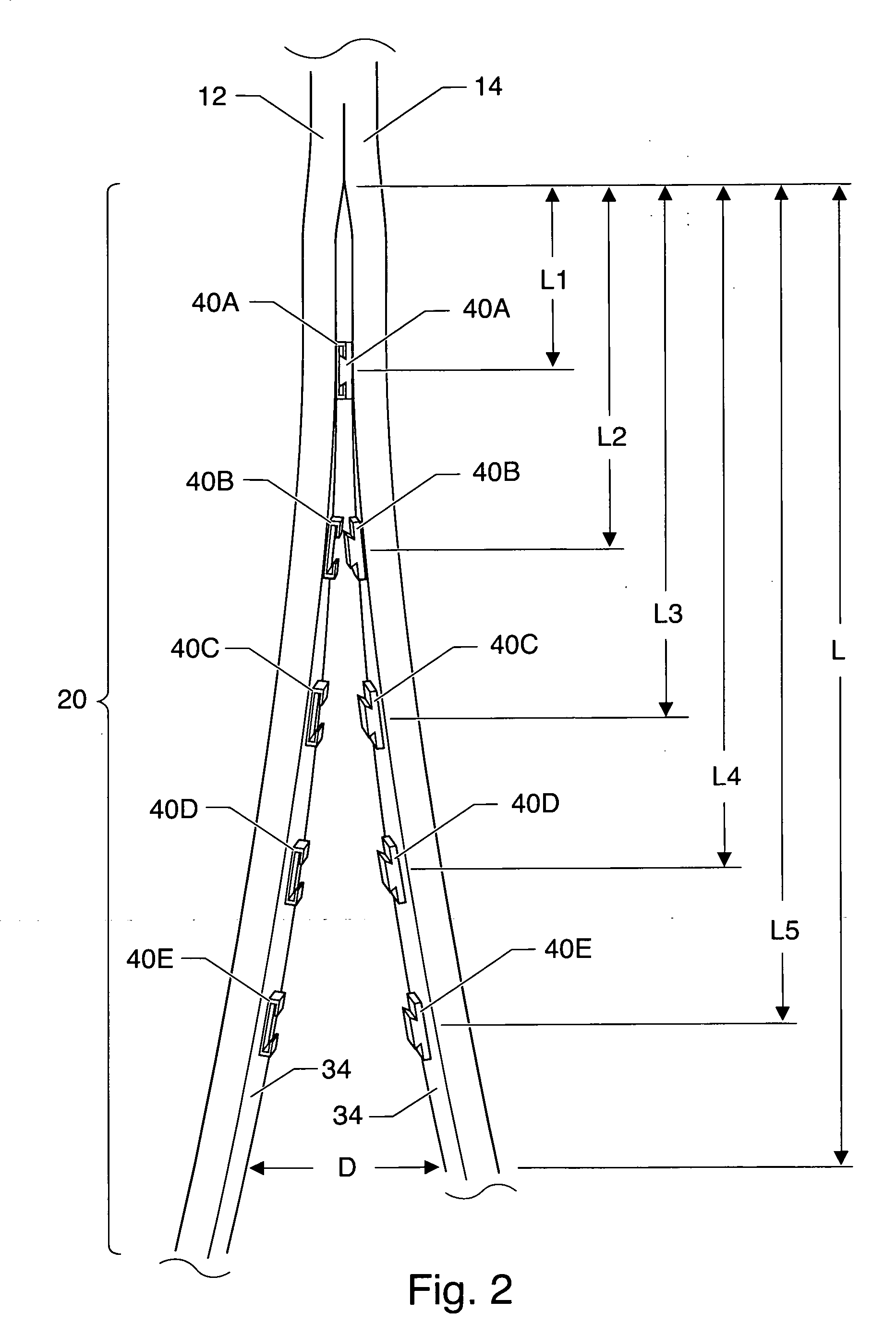Catheter assembly with joinable catheters
a catheter and distal tip technology, applied in the field of catheters, can solve the problems of inability to adapt to the patient's wide variety of sizes, the distance between the distal tips of the catheter is predetermined, and the catheter may not be useful for a wide variety of patients' sizes, so as to avoid discomfort, trauma, or stenosis, and maintain the thickness of the wall. , the effect of decreasing the distance between the distal tips
- Summary
- Abstract
- Description
- Claims
- Application Information
AI Technical Summary
Benefits of technology
Problems solved by technology
Method used
Image
Examples
Embodiment Construction
[0025] Illustrative embodiments of the present invention include multiple lumen catheter assembly 10 that has at least two joinable catheters 12, 14 such that the distance between two of the at least two catheters 12, 14 at a distal section or end 20 of the catheter assembly 10 can be varied. While the invention is described herein in conjunction with the preferred and illustrative embodiments, it will be understood that the invention is not limited to these embodiments.
[0026] Catheter assembly 10 comprising multiple catheters 12, 14 can be constructed in accordance with the illustrative embodiments of the present invention as shown in FIGS. 1-6. FIG. 1 is a perspective view of catheter assembly 10 showing the general structure of the one illustrative embodiment in an unstressed configuration. FIG. 2 is a perspective view of a distal section 20 of the embodiment of shown in FIG. 1 showing generally the joinable catheters configuration. FIG. 3 is a perspective view of a distal secti...
PUM
 Login to View More
Login to View More Abstract
Description
Claims
Application Information
 Login to View More
Login to View More - R&D
- Intellectual Property
- Life Sciences
- Materials
- Tech Scout
- Unparalleled Data Quality
- Higher Quality Content
- 60% Fewer Hallucinations
Browse by: Latest US Patents, China's latest patents, Technical Efficacy Thesaurus, Application Domain, Technology Topic, Popular Technical Reports.
© 2025 PatSnap. All rights reserved.Legal|Privacy policy|Modern Slavery Act Transparency Statement|Sitemap|About US| Contact US: help@patsnap.com



